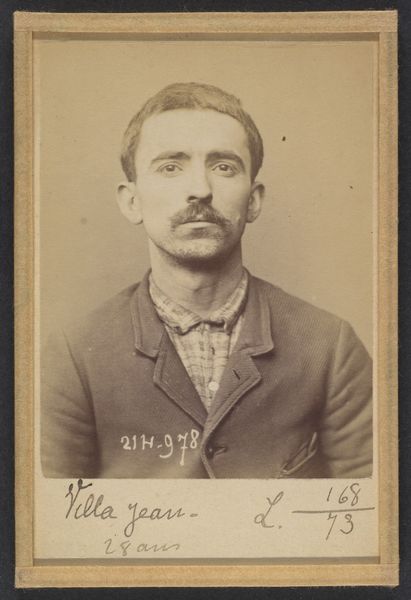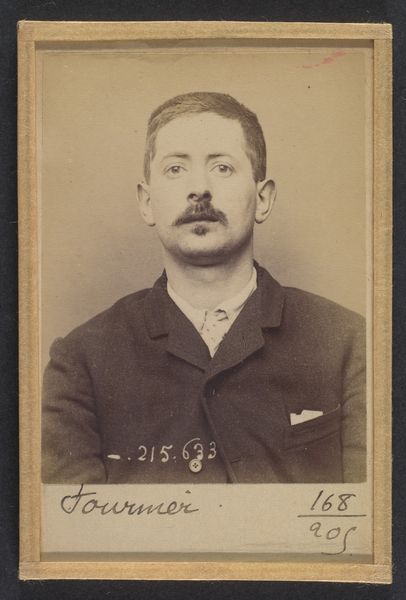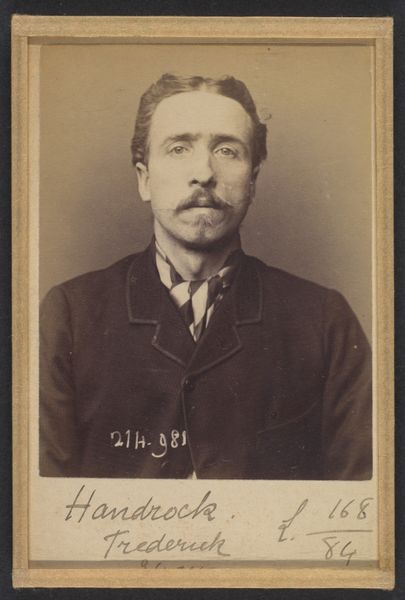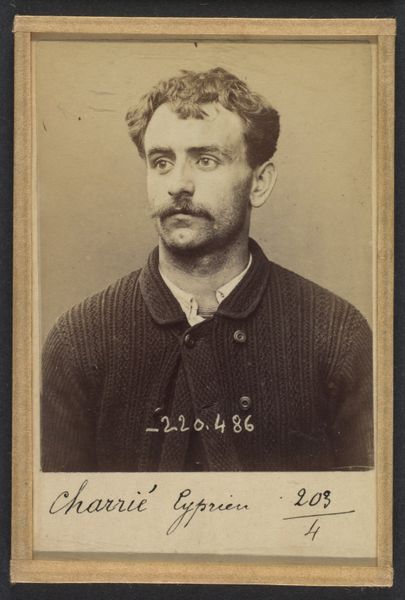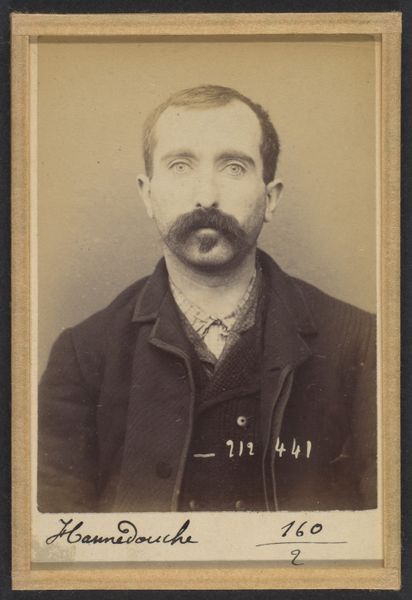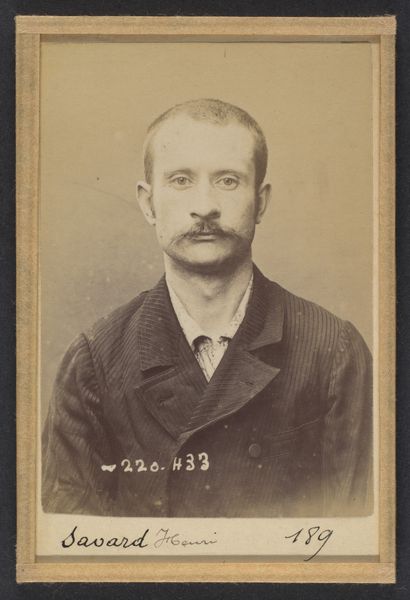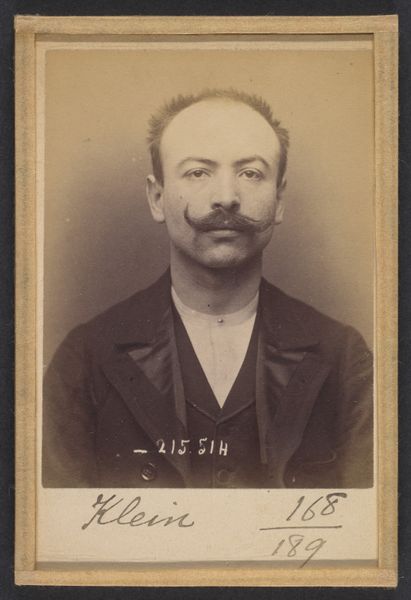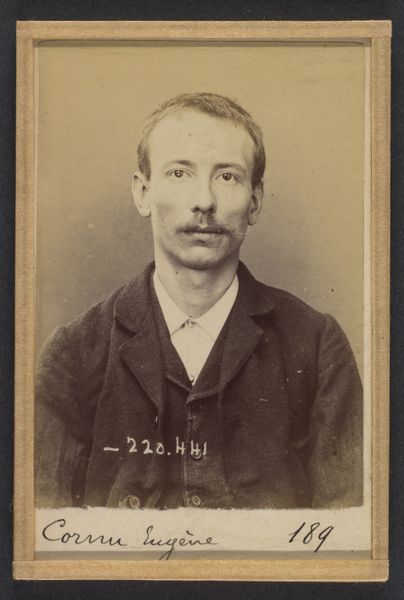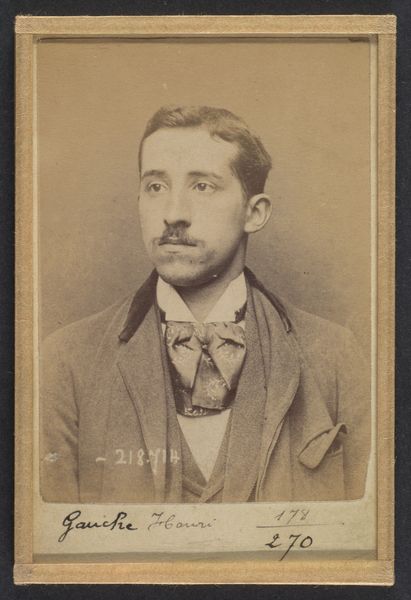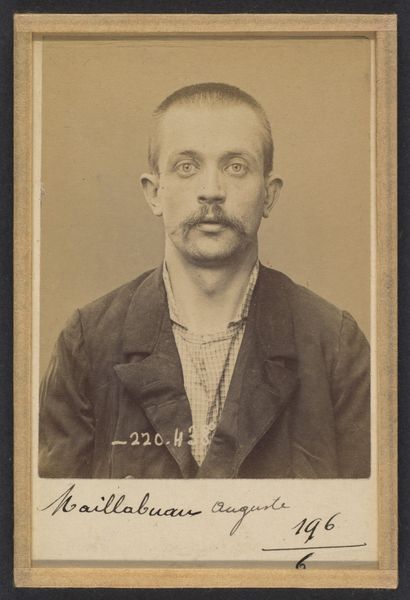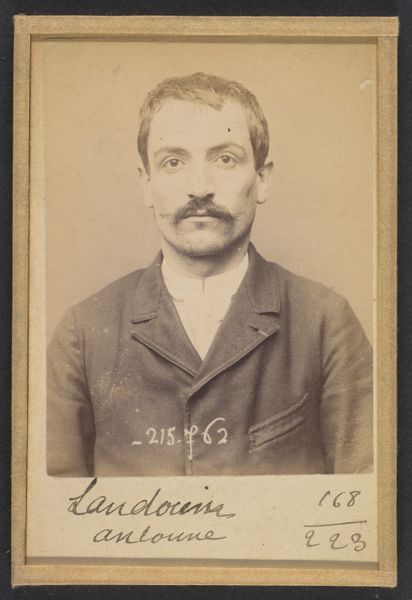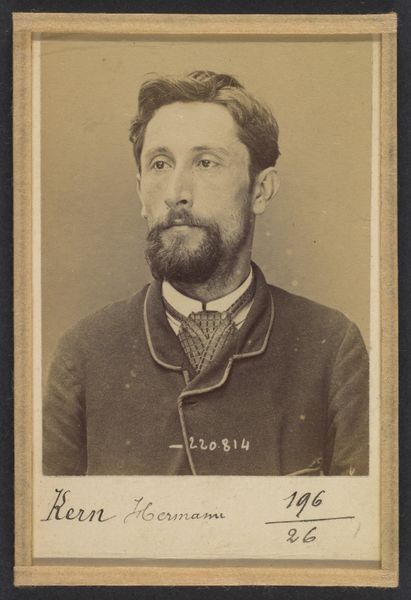
Lassalas. Ernest, Auguste. 33 ans, né à Paris IVe. Ébéniste. Anarchiste. 2/1/94 1894
0:00
0:00
photography, gelatin-silver-print
#
portrait
#
african-art
#
photography
#
gelatin-silver-print
#
academic-art
Dimensions: 10.5 x 7 x 0.5 cm (4 1/8 x 2 3/4 x 3/16 in.) each
Copyright: Public Domain
Editor: Here we have Alphonse Bertillon’s gelatin-silver print, “Lassalas. Ernest, Auguste. 33 ans, né à Paris IVe. Ébéniste. Anarchiste. 2/1/94," made in 1894. The subject’s gaze is striking, but the work overall has a somewhat clinical, unsettling mood to it. What can you tell me about this piece? Curator: The piece really underscores the power dynamics inherent in image-making, doesn't it? This is a mugshot, born out of Bertillon’s system of anthropometry, a pseudo-scientific way to classify criminals. Note the standardized format – the subject, an artisan and declared anarchist, reduced to a set of measurements, a piece of data. Editor: So, the material conditions – the gelatin silver print process – are directly tied to social control? Curator: Precisely. Photography, initially celebrated for its potential to democratize portraiture, is here weaponized for surveillance. Consider also Lassalas' profession – a cabinetmaker, a skilled laborer. How might his class and political leanings factored into his being targeted and documented in this way? Editor: It’s chilling to think of the photographic process being used to strip someone of their identity. It also challenges the common idea of portraiture being reserved for the wealthy or powerful. Curator: Absolutely. Think about the economic forces at play: the availability of photographic materials, the resources to develop and archive these images, the very system of policing that necessitates them. It's not just a picture; it's a document of power, labor, and control. Editor: I never thought about mugshots in terms of materials or labor before. It completely changes my understanding of the work. Curator: Right? By looking at how the work was produced, what it’s made of, and who controlled its distribution, we can reveal hidden narratives about labor, class, and societal power structures that the art embodies.
Comments
No comments
Be the first to comment and join the conversation on the ultimate creative platform.
